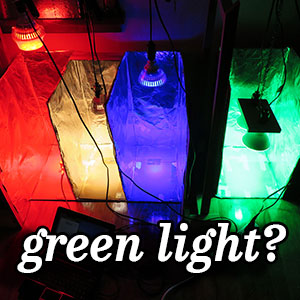Natural Light:
Harness that Power!
Good lighting makes the difference between plants that are strong and hardy or weak and spindly. The process starts indoors with seedlings and inside plants. What does it take for strong growth? Then as Spring approaches, we transition to outdoor lighting. How can we best use the sun to our advantage?
Capturing Sunlight
To get your own seedlings started, many recommend a sunny windowsill. In the northern hemisphere, that means a large south facing window. This will provide your plants with a good measure of free, full spectrum light. But relying exclusively on ambient light has its drawbacks.
REDUCED SOLAR RADIATION: First of all there are seasonal effects on solar radiation. In a temperate Winter the days are shorter. These reduced photoperiods mean diminished growth. Also, the sunlight intensity is reduced due to the inclination of the sun. In some regions, Winters may be plagued by overcast days. This all impacts the amount of light available to your plants.
"EFFICIENT" WINDOWS: The light that DOES reach your windows is reduced even further upon entry. As sunlight passes through a layer of glass, there is a reduction in light intensity. With advances in window efficiency, we commonly see double pane or even triple pane windows. That's good for your utility bills, but not for your seedlings.
Do your windows have a screen? Are your windows dirty? These factors can further reduce the light levels. Additionally, we now have Low-E glass that filters out a lot of the sun's UV light. Plants benefit from UV light, so they are at a disadvantage.
Are Your Plants Starving?
Using free natural light is smart and sustainable. But recognizing its limitations is a crucial aspect of the process. How can you tell if your plants are getting enough light? What can you do if they're not?
PHOTOTROPISM: When placing seedlings next to a sunny window, the first thing you may notice is phototropism. Are the plants tilting, angled toward the window? This is positive phototropism (the growth of plants toward a light source). Since the window is the brightest light source, the plants are drawn to it. This natural occurrence should not be a major concern.
ELONGATION: On the other hand, you may also observe that your plants are thin and spindly. It might seem that they are literally stretching towards the window. The stretch is a shade-avoidance response where the plants are trying to compete for light. Elongation or legginess can be quantified by measuring the distance between the plant's internodes. Longer internodes are a clear indication that your plant is starving for light.
Addressing Light Deficiencies
What should you do if your plants are not getting enough light? It depends on your goals. Are you growing them indoors for Winter consumption, like salad greens? If so, you can ignore the issue. Just eat them and enjoy your baby greens!
Are you growing the seedlings as transplants for an outdoor garden? Then you have two options. First, you can supplement their growth with some sort of artificial light. A good grow light will COMPLETELY eliminate elongation, resulting in dense, bushy growth. Or secondly, you could take special steps to acclimate them before moving them outdoors.
HARDENING OFF: Once Spring arrives you shouldn't plant your weak, spindly seedlings under the full sunlight right away. If you did, they would likely die very quickly. Elongated seedlings have been growing in "shade mode" as though they were under a larger overhead plant canopy. They have no adaptations for full, intense sunlight. Their tissues are soft and fragile.
At this point, they need to be acclimated. Hardening off is the process of gradually introducing your plants to the higher light levels of the outdoors. Place them outside for a short period of time. With each passing day you can increase the amount of time they are outside. Cloudy days are a great time to start the process. Or using some shade cloths can be a way to buffer the sunlight until the plants are stronger.
Optimizing Outdoor Lighting
Now we're ready to move to your outdoor growing space! Selecting an appropriate spot for your vegetables is really the first thing to consider. Do you have a nice sunny spot where they can reside? Keep in mind that sunlight levels and positions are not constant. In the morning, the sun rises in the east with a relatively low light intensity. By noon the intensity has spiked as the sun shines just slightly from the south (northern hemisphere). Then it drops off to the west as evening sets in.
If your yard is small, or crowded with trees, fences and structures it can be a challenge to find a good spot. Start by considering the south side of your home. Try to get sunlight on your plants between 11 AM and 3 PM, when light levels are highest. Check on the spot throughout the day. If you get the opportunity you could even...
Create a Light Profile!
If you look at this series, you can see the change in shadows as the day progresses. This light profile shows a south facing patio on a Mid-August day in PA. It has helped me to identify the areas that will get the most sunlight. I can tell that the area covered in plastic will receive direct sun for 5 or more hours. All of these hours span the time of peak intensity, which will result in optimal growth.

![Back Patio: Light Profile [ 9:30 AM ] - Click to enlarge Back Patio- Light Profile [ 9:30 AM ]](photos/light-profile-9.30AM-th.jpg)

![Back Patio: Light Profile [ 11:00 AM ] - Click to enlarge Back Patio- Light Profile [ 11:00 AM ]](photos/light-profile-11.00AM-th.jpg)
![Back Patio: Light Profile [ 12:45 PM ] - Click to enlarge Back Patio- Light Profile [ 12:45 PM ]](photos/light-profile-12.45PM-th.jpg)
![Back Patio: Light Profile [ 2:30 PM ] - Click to enlarge Back Patio- Light Profile [ 2:30 PM ]](photos/light-profile-2.30PM-th.jpg)
![Back Patio: Light Profile [ 4:00 PM ] - Click to enlarge Back Patio- Light Profile [ 4:00 PM ]](photos/light-profile-4.00PM-th.jpg)
![Back Patio: Light Profile [ 6:45 PM ] - Click to enlarge Back Patio- Light Profile [ 6:45 PM ]](photos/light-profile-6.45PM-th.jpg)

![I Bleed Chlorophyll [Gardening T-Shirt Design]](images/I-Bleed-Chlorophyll-Gardening-T-Shirt-th.jpg)
